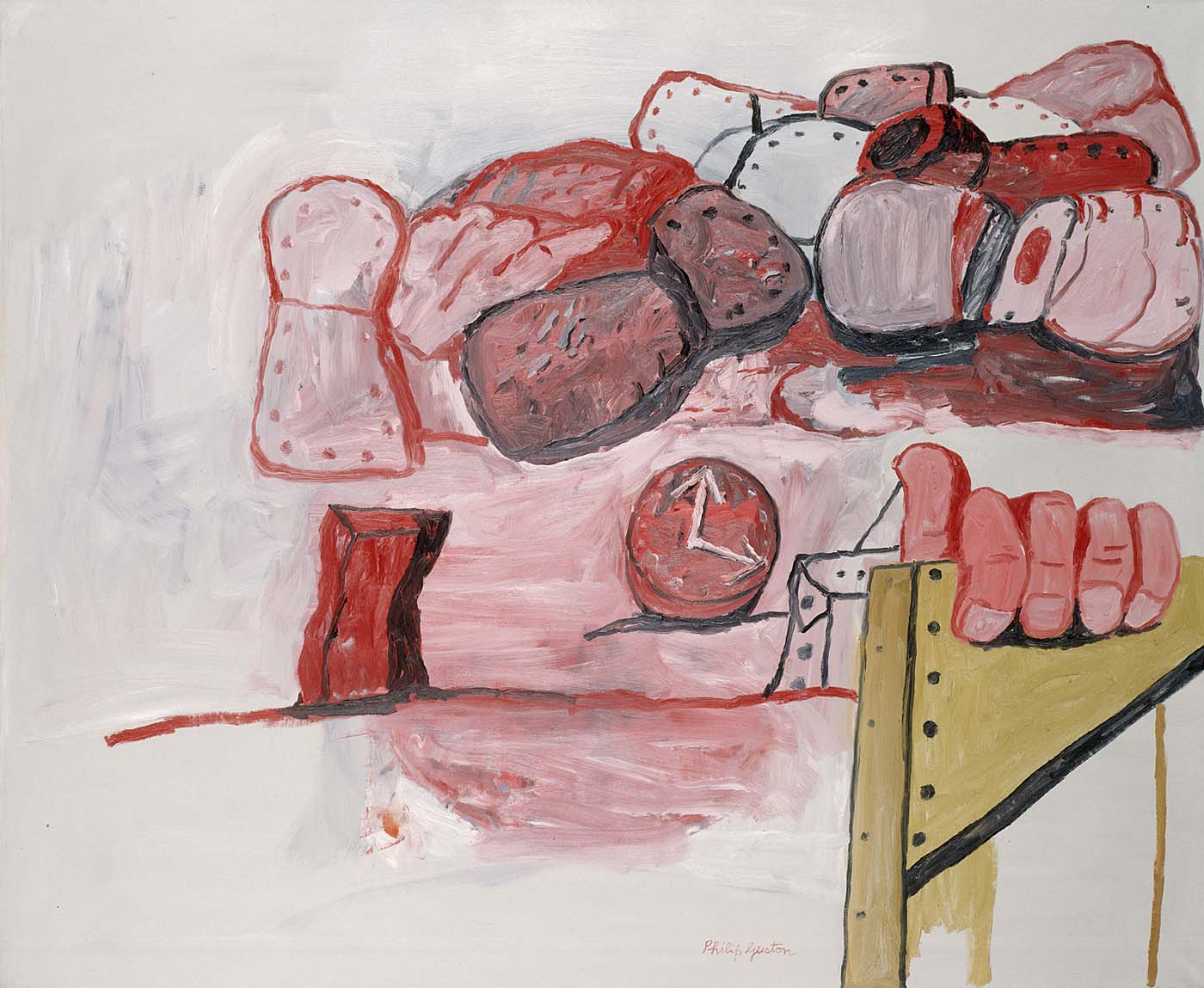Transition

Guston made a name for himself as an abstract expressionist, but by the late 1960s had grown weary of "all that purity." He retreated to Woodstock, New York, and began painting ferocious, comic canvases filled with figures and mundane objects. The title is ironic, for Guston's shift to another kind of painting was not a slow and graceful transition, but an abrupt and frightening right turn.
A show of new paintings in 1970 brought a blast of bad press, and Transition shows Guston hiding behind the canvas, as if taking refuge from his critics. One disembodied eye peers warily at a pile of shoes, a recurrent symbol in Guston's new work that represented the tangle of the ordinary world he felt compelled to paint. A tiny, clownish doorway suggests a move from one place to another, while the clock near the center of the image points to the artist's canvas, as if ticking away the time Guston has left to paint. Smoking, drinking, and overwork brought on a heart attack not long after this work was finished.
Once, while showing paintings to a friend, Guston said, "People, you know, complain that it's horrifying. As if it's a picnic for me, who has to come in here every day and see them first thing. But what's the alternative? I'm trying to see how much I can stand."
Exhibition Label, Smithsonian American Art Museum, 2006
- 8
- Other objects by this creator in this institution
- 17
- Objects by this creator in other institutions